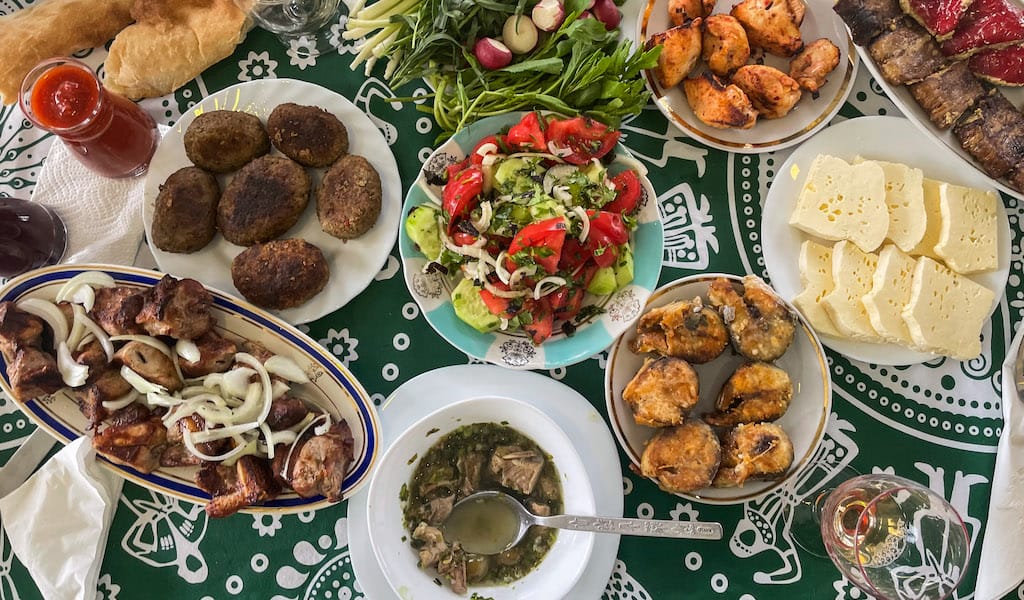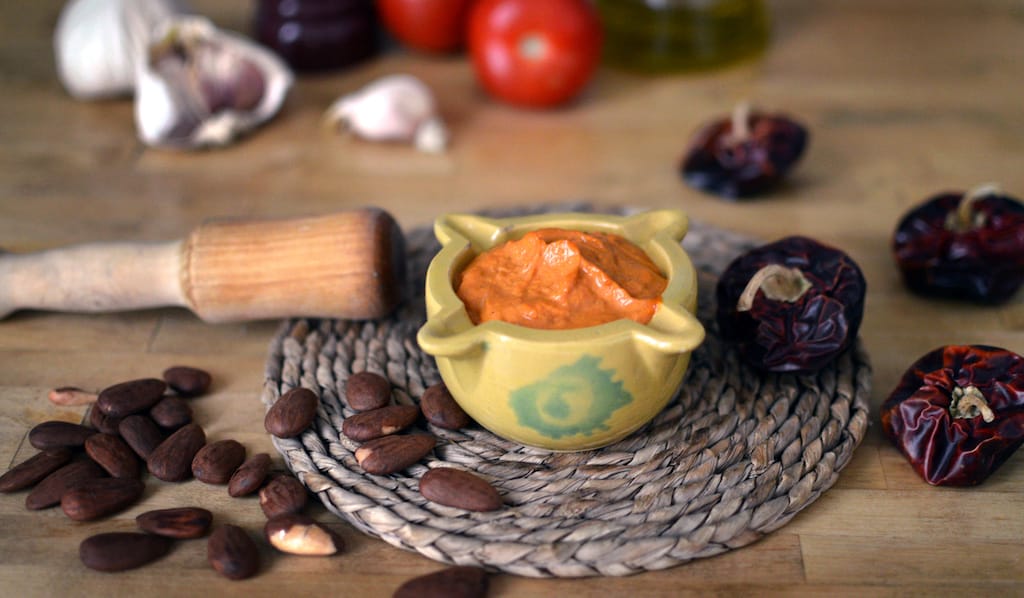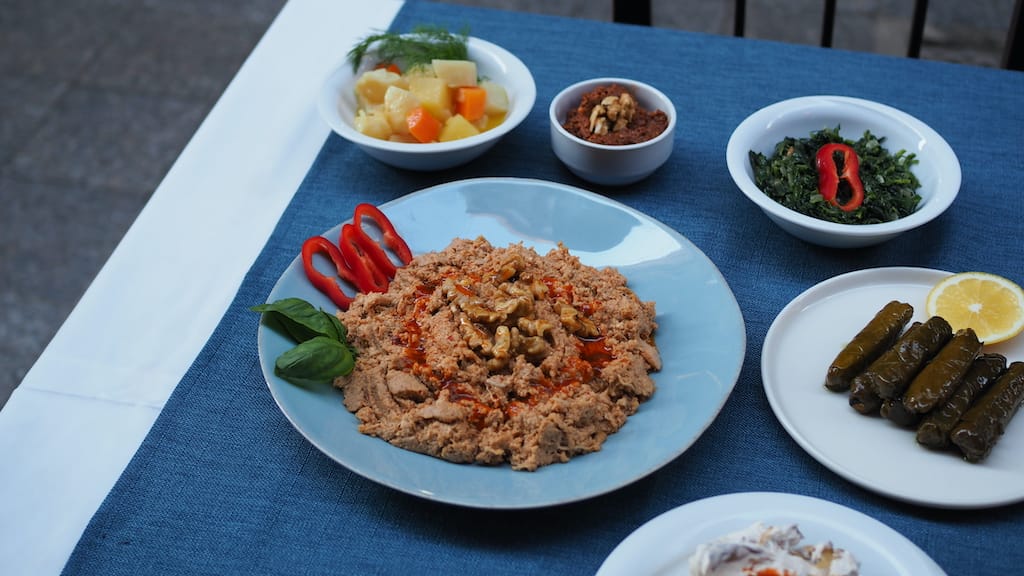There’s no dish that signals in the arrival of spring and early summer in Georgia like the verdant tangy lamb stew called chakapuli. The spring dish, originally from the country’s wine growing eastern region of Kakheti, makes its seasonal debut at Orthodox Easter (or Paska) feasts that usually falls around mid-April.
After a long, solemn period of reflection and penance when all meat (except the permissible fish) and pleasure are eschewed by the faithful, joyful cries of “Kristi Aghsdga!” or “Christ is Risen!” replaces standard greetings for a day of feasting and celebration. Families and friends (and lucky invited guests) gather around tables laden with all the classic staples of a Georgian supra, but the signature starter dish proffered is soup bowls of lamb (or veal) simmered in a rich white wine-based broth with fresh green tarragon, spring onions, green coriander, fresh young garlic bulbs and sour green plums called tkemali.
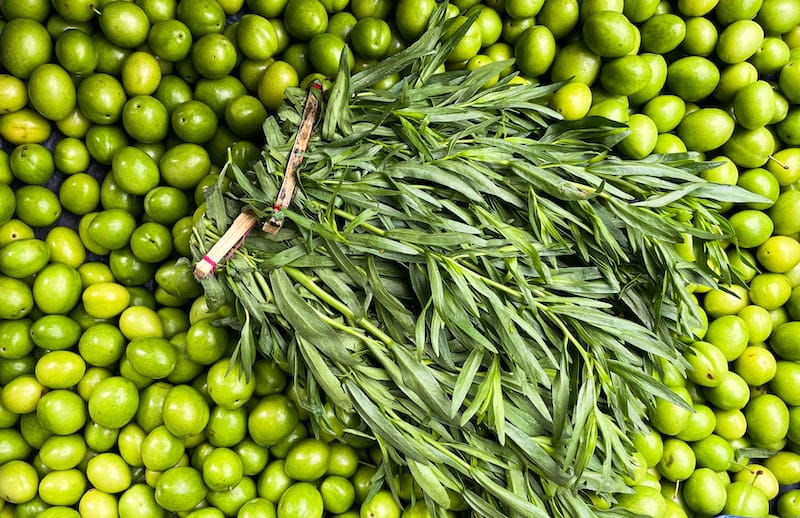
Despite its seemingly basic cooking method, this earthy, herby stew with its astringent bite of tarragon is one of the unique Georgian dishes that practically has no equivalent in other cuisines.
Thanks to flourishing greenhouses that provide fresh greens year-round, chakapuli is also available year-round on menus of many a traditional Georgian restaurant, but very often it can be a disappointing when ordered off-season – often watered down and not guaranteed to be the freshest. Raw green tkhemali plums also make their appearance only from late-April to mid-June, meaning this is also the period to enjoy the dish at its seasonal best.
While we’ve had our share of delicious chakapuli at trusted mid-to-upper range downtown Tbilisi restaurants like Iasmani and Alubali, as longterm residents of the country and annual observers of early summer markets overflowing with alluring sacks of green plums and bundles of tarragon stacked closely together, it was high time to try our hand at making this spring-summer dish ourselves.
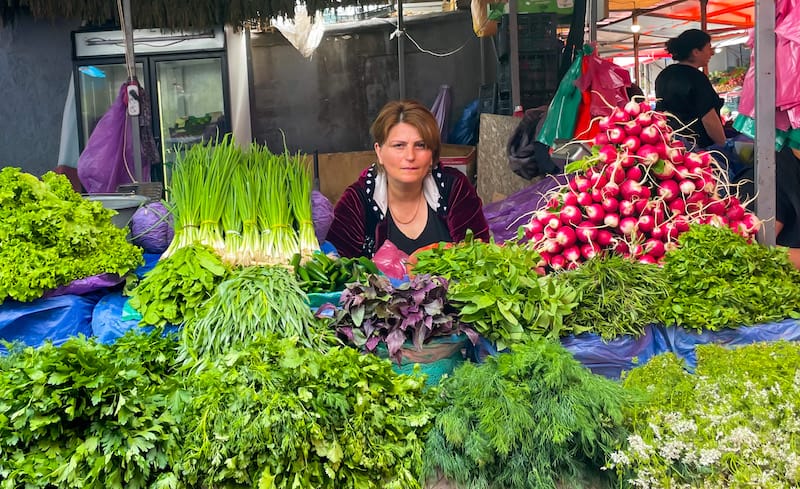
We had already jotted down notes on recipes shared by different Georgians whose chakapuli we had tasted, but like all the best folk recipes, quantities were always approximate and based on what the French like to call “au pif” which translates to “at random” but also encourages the use of the nose, or finer instincts.
None of the women we had spoken with added more than two glasses of white wine – usually home-made Rkatsiteli wine – to about a kilo of meat. Just to double check, we decided to ask Andro Barnovi, a trusted local winemaker friend and amazing cook who had who had just shared a Facebook post of a recent chakapuli he had whipped up for guests at his marani.
Barnovi’s wines, sold under the label Wine Artisans, are among our favorite Georgian wines when seeking refined, well-rounded qvevri wine with no hidden surprises. But we confess we’re also partial to his wines for the legendary meals he hosts at his winery, which always feature one main dish cooked by the man himself.
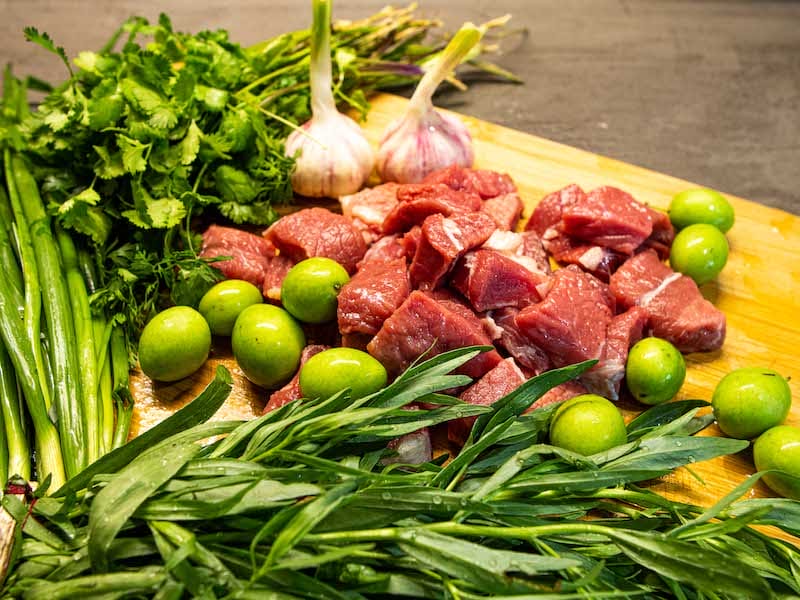
While we wouldn’t spare Andro’s beautiful wines to cook with, he did encourage us not to shy away from the quantity or even quality of wine for the chakapuli. “Acidity, richness of flavor, and even structure vary depending on what wine you used in it,” he insisted, adding that he loved to use even aged wines sometimes to enjoy the difference in flavor it provides and he never limited the portions either – “Three or four or more [glasses]; go with your taste buds,” was his take on the amount of wine to use.
Being a bit more price-conscious, we opted for qvevri rkatsiteli from Wine Gallery, one of the few places in the downtown left bank quarter of Tbilisi for dependable and reasonably priced good wine sold on tap. After this, we sought out a local Muslim Azerbaijani-Georgian butcher a few streets down on Aghmashebeli Avenue for some fresh cuts of lamb. A previous trip to the local food market, Deserter’s bazaar, provided all the fresh greens – bundles of fresh tarragon, spring onion, fresh garlic bulbs and coriander leaves.
Taking some inspiration from this cinematically filmed video we found online of a local chef making this signature spring dish that he calls “the pearl of Kakhetian cuisine,” we set about making our very own chakapuli for two and a half persons.
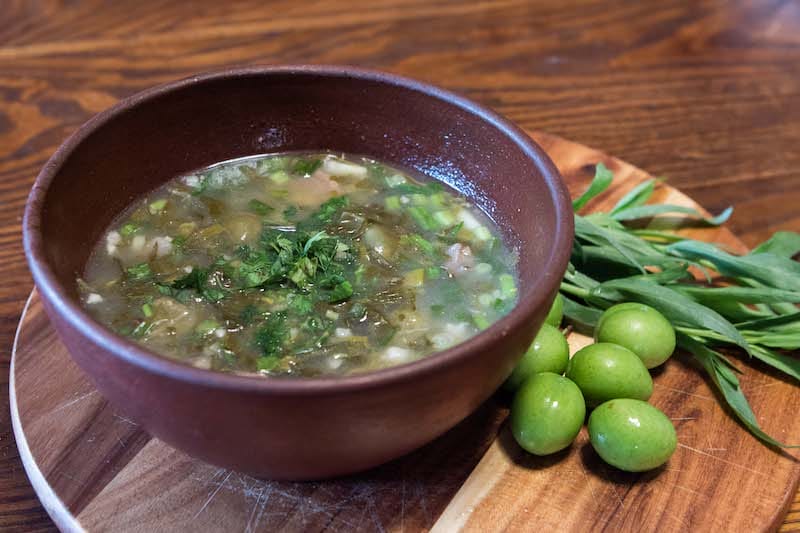
Chakapuli Recipe
While still relying on the French “au pif” sensibility, we decided to measure some of the ingredients we used to be able to adjust tastes if necessary for the next batch.
Stores selling Georgian produce stock preserved sour green plums that are often used to make the first Easter Chakapuli in case it falls too early for the first harvest of the green cherry plum (prunus cerasifera).
If you can’t hold of it, 2-3 teaspoons of green tkhemali or tkemali sauce, a popular Georgian condiment made from the plums, can replace the sour plums. An alternative is to use your local variety of young sour green plums before they ripen.
Ingredients
400 grams of boneless lamb (or veal)
150 ml Rkatstiteli amber wine (any tannin-heavy white wine should do)
A head of young garlic – about 8 cloves
2 bunches of tarragon
1 generous bunch of spring onions
1 generous bunch of coriander
6 raw green tkemalis that measured about 100 grams (if sauce tastes too tart, you can remove some during cooking)
Salt
Water
Method
Remove tarragon leaves from the hard stalk and roughly chop.
Roughly chop fresh coriander and green onions.
Roughly crush garlic cloves.
Chop meat into bite sized chunks.
While some prefer to brown the lamb (or veal) in oil and garlic to temper the meat, we went with the traditional method: start by layering the meat in a heavy bottomed steel saucepan and adding the chopped greens on top.
Next, carefully measure two glasses (150ml of wine) and add to the pot with a cup of water and start the fire on low heat. Add salt to taste once it starts bubbling.
As the stew slowly simmers and the liquid reduces, add a bit more water as needed (taking Andro’s advice, tip in a bit more wine as well).
Let the chakapuli cook for about 30 minutes until the lamb has reached a perfect, soft consistency. Note: After about 15 minutes, we decided to fish out two of the tkemali plums as the stew was starting to be a bit too tart for our taste. It was a good decision – the chakapuli had that right tinge of tang without being face-crunchingly sour.
Pouring ourselves a glass of the leftover wine, we sat down to a well-deserved lunch of a generous bowl of chakapuli. It was the first time that we had the stew as a stand-alone dish without other items to distract, and the concentrated attention allowed us to enjoy even more the refreshing bowl of herby, zesty goodness with delicious, melt-in-your-mouth chunks of lamb. It’s a dish that undoubtedly deserves its title as the pearl of Kakhetian dishes.
 April 2, 2024 Grandma’s Folar Recipe
April 2, 2024 Grandma’s Folar Recipe
Folar is the generic name given to traditional Easter sweet bread in Portugal. Making it […] Posted in Lisbon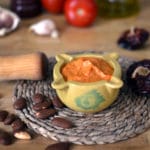 March 20, 2024 Recipe
March 20, 2024 Recipe
Served as a sauce, romesco is certainly striking: It has an intense dark orange color […] Posted in Barcelona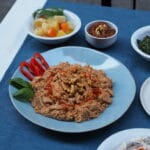 February 16, 2024 Recipe
February 16, 2024 Recipe
Some recipes are so deeply connected with the region from which they originate that they […] Posted in Istanbul
Pearly JacobPearly Jacob
Published on July 31, 2023
Related stories
April 2, 2024
LisbonFolar is the generic name given to traditional Easter sweet bread in Portugal. Making it from scratch is somewhat of a long process, but being confined due to the coronavirus crisis, we seem to have a bit more time on our hands than expected. My family’s folar recipe is from my grandmother Felismina, who was…
March 20, 2024
BarcelonaServed as a sauce, romesco is certainly striking: It has an intense dark orange color and a dense texture that saturates and blankets whatever you dip in it. Once in the mouth, you get a piquant touch of vinegar, which is soon enveloped by the nutty creaminess of ground almonds (or perhaps hazelnuts) and olive…
February 16, 2024
Istanbul | By Lian Penso Benbasat
IstanbulSome recipes are so deeply connected with the region from which they originate that they are simply named after that place. Circassian chicken, an appetizer beloved in Turkey and throughout the Caucasus, is such a dish. The recipe itself takes on many different variations across different geographical locations, much like the mosaic of people and…







































